#shark science
Explore tagged Tumblr posts
Text

Blacktip blood draw!
When drawing blood from sharks, researchers tend to target the caudal vein that runs against the base of the spine of the tail. It's less risky than targeting the dorsal arteries, but does require a fine bit of precision to find!
Photo by the Shark Research & Conservation program at RSMAS
#carcharhinus limbatus#blacktip shark#marine biology#shark research#sharks#shark science#marine bio#biology#zoology#animals#marine life#nature#science#ocean#vertebrate zoology
30 notes
·
View notes
Text
Great Hammerheads


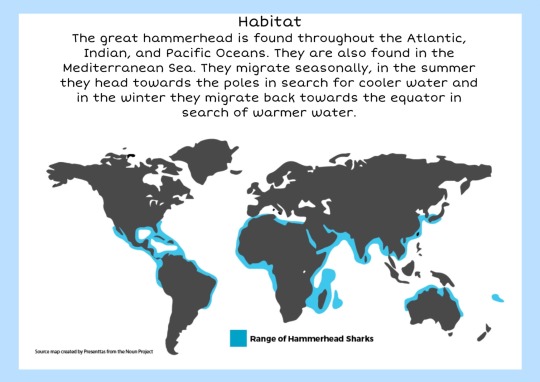
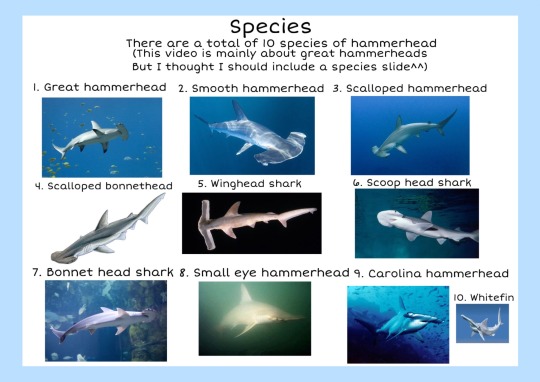

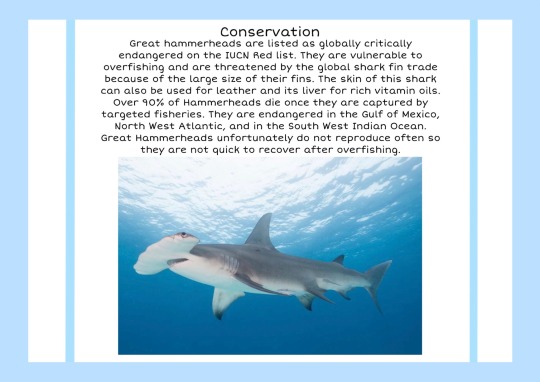
Little info cards I made on the Great Hammerhead (one of my FAVORITE species)
#science#stemblr#marine biology#micaelyn info dumps#oceanblr#shark science#shark facts#sharks#hehe i love sharks#nature#ocean
35 notes
·
View notes
Text
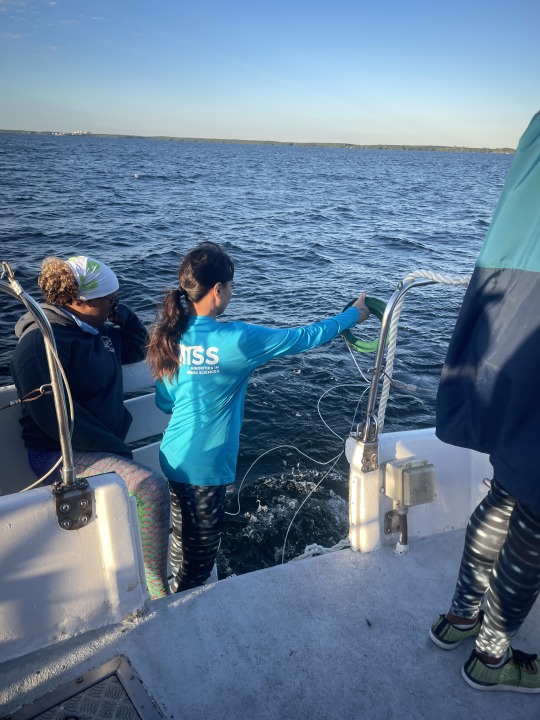
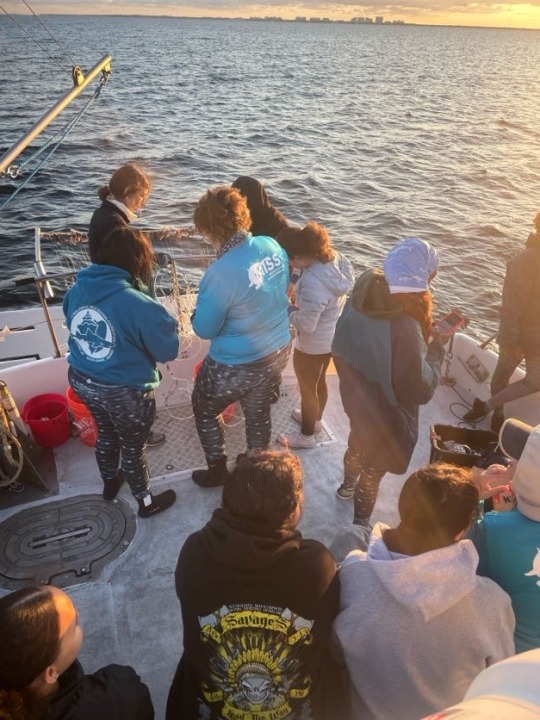



A few photos from our recent workshops! 📸
Being on the water learning right beside others who share the same love for the ocean is always the best time.
Thank you so much to these amazing groups and to our sponsors for helping us make these programs possible. 💙
Special thank you to:
💙 Remora Technical
💙 The Johnson-Singer Arts Education Fund
💙 Smiley Moon Studio
💙 Cape Clasp
💙 Waterlust
💙 Swim With Sharks NY
MISS workshops provide hands-on field experience to participants that allows them to do shark research. They learn various field research techniques and stay on a live-aboard research vessel with the MISS co-founders.
To learn more about our workshops, visit: https://www.misselasmo.org/workshops.html
3 notes
·
View notes
Text

Lesser spotted cat shark 🐈 🦈
#aesthetic#animals#art#artists on tumblr#digital art#design#digital artist#nature#illustration#my draws#original art#science#i love sharks#wildlife#wildlife art#stars#procreate#digital drawing#drawing#marine biology#shark#marine life#vaporwave#digital illustration#illustrators on tumblr#small artist#artist on tumblr#illustrative art#artwork
14K notes
·
View notes
Text
youtube
0 notes
Text
#!!!!!#great white shark#sharks#shark pups#good news#environmentalism#science#environment#nature#animals#conservation#nyc#new york#new york city#usa#ocean life#marine life#sea life
32K notes
·
View notes
Text

There are four types of fish scales!
Cycloid scales are thin, overlap, and flexible. They're found on primitive teleosts (like minnows and carp).
Ctenoid scales have small, backwards pointed scales (known as cterns) make the fish more hydrodynamic and faster. They're found on Advanced Ctenoids (like perch and sunfish).
Ganoid scales are thick, diamond-shaped, and mostly non-overlapping. They're found on Chondrostei (like sturgeons and paddlefish).
Placoid scales are spikey and tooth-like with nerves. These are found on Chondrichthyes (like sharks and rays).
Ichthyology Notes 3/?
#science#biology#animals#ocean#wildlife#marine ecology#animal facts#marine life#fun facts#marine biology#fish#fish facts#fins#fish fins#scales#fish scales#ichthyology#fish anatomy#anatomy#minnows#carp#perch#sunfish#sturgeons#paddle fish#sturgeon#paddlefish#shark#sharks#rays
20K notes
·
View notes
Text
LITTLE GUY SPOTTED
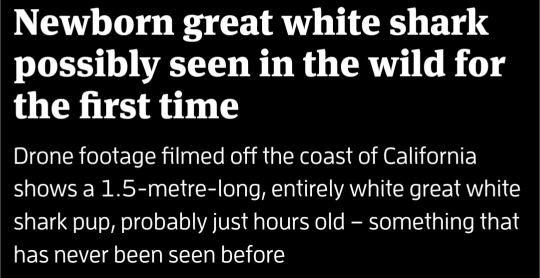

55K notes
·
View notes
Text
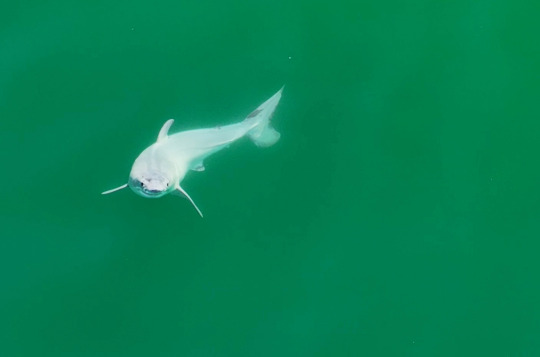
Exciting news for the cute shark lovers of the world! We finally have a recorded sighting of a baby great white shark, likely only a few hours old.
The question of where great white sharks give birth still remains a mystery to this day but this footage may suggest the coasts of California, where the footage was taken, are a site where these sharks give birth.
#marine animals#marine biology#shark#sharks#shark facts#fish facts#sharkblr#fish#fun facts#science#science news#great white shark
9K notes
·
View notes
Text
youtube
YES, SHARKS MAKE SOUNDS, AND WE'VE JUST HEARD ONE
Yes, that sound you’re hearing, a sharp, rapid click, is actually made by a shark. For the first time ever, scientists have recorded sharks producing sounds, challenging the long-held belief that these ocean predators are completely silent. The surprising discovery came during routine behavioural experiments in New Zealand, when researchers noticed that Spotted Estuary Smooth-Hound Mustelus lenticulatus, emitted loud, distinctive clicks when handled underwater. These sounds, likely defensive or stress-related, were consistent across multiple individuals and even reached volumes comparable to a shotgun blast.
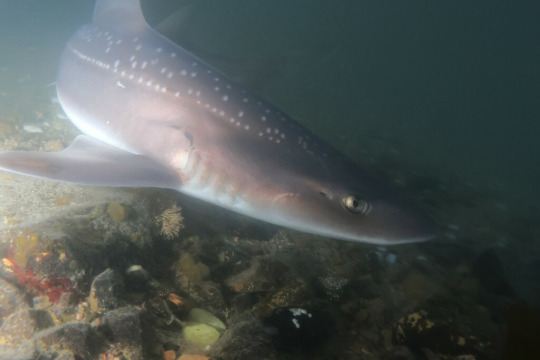
- Spotted Estuary Smooth-Hound at Wellington, New Zealand. Photo by Luca Davenport-Thomas
The researchers believe the noise may come from the sharks snapping their flat, plate-like teeth, a trait adapted for crushing crabs and other hard-shelled prey. Though the exact mechanism remains unconfirmed, and it’s still unclear whether these clicks are intentional or simply a reflex, the finding opens new questions about acoustic behaviour in sharks. Similar clicking has been observed in rays and mantas, hinting that this might not be such a rare trait after all. So yes, that’s the sound a shark makes, and it might just be their version of “back off.”
Reference: Nieder et al., 2025. Evidence of active sound production by a shark R. Soc. Open Sci.
2K notes
·
View notes
Text

LDN 1235, Shark
1K notes
·
View notes
Text
While on a shark dive, it is important to respect their space as they are wild animals. That said, these nurses were definitely seeking out interaction, and the divemaster had a safe, touch-free compromise at the ready!
#sharks#nurse shark#marine biology#marine bio#biology#zoology#animals#nature#ocean#cute animals#marine science#elasmobranchs#shark diving#scuba#scuba diving#marine conservation#ecology
2K notes
·
View notes
Text
Elasmobranchs
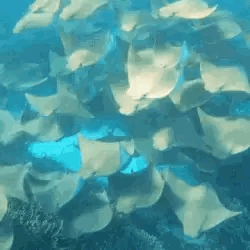
What are elasmobranchs?
Elasmobranchii, a subclass of fish (Sharks, skates and rays), are characterized by their cartilaginous skeleton. Cartilage is a flexible connective tissue found in human ears and nasal tips. It provides Elasmobranchs with amazing flexibility. Elasmobranchs evolved over 400 mya, long before trees existed. They’ve adapted many unique adaptations that help them survive in the aquatic environment. Notably, their skin is covered in tiny tooth like structures called dermal denticles. Dermal denticles decrease drag and turbulence, allowing sharks and rays to swim with incredible speed and agility.
Shark Evolution
Shark evolution goes back 450 million years ago during the late Ordovician period. Scientists believe that sharks from this period did not have teeth. The earliest shark teeth scientists have discovered comes from an ancient fish that lived during the Devonian period. This fish is the Doliodus problematicus. They are described as the “least shark like shark.” Here’s an example of what shark teeth looked like during the Devonian period.

They look very different from todays shark teeth!
Stingray Evolution
Stingrays evolved from sharks. Sharks emerged 450 million years ago and stingrays evolved 200 million years ago. An adaptation that both sharks and stingrays have is the Ampullae of Lorenzini. Sharks, skates, and rays have these tiny mucus filled pores in their skin called the ampullae of lorenzini which can detect electricity in the water. They help elasmobranchs find prey by detecting electrical fields produced by prey activity.
Conservation
Unfortunately many species of elasmobranchs are endangered. This is mostly due to overfishing and shark finning. Shark finning is a practice where fisherman will cut off the fins of sharks and dump their bodies back in the water. It’s extremely inhumane and it causes sharks major suffering, without their fins they can’t swim and will end up suffocating. Overfishing and bycatch is another major problem where fisherman will accidentally catch unwanted sharks or Rays. Unintentionally caught animals will often die after being tossed back into the sea. Thankfully there are conservation efforts working protect endangered species. Organizations such as NOAA Fisheries and Shark Stewards are working to ban shark finning in different countries. Other organizations such as Minorities in shark science and shark research institute conduct research on shark species, helping people better understand sharks and protect them.
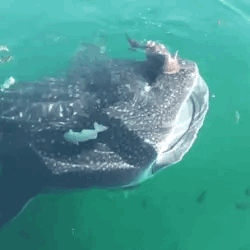
15 notes
·
View notes
Text
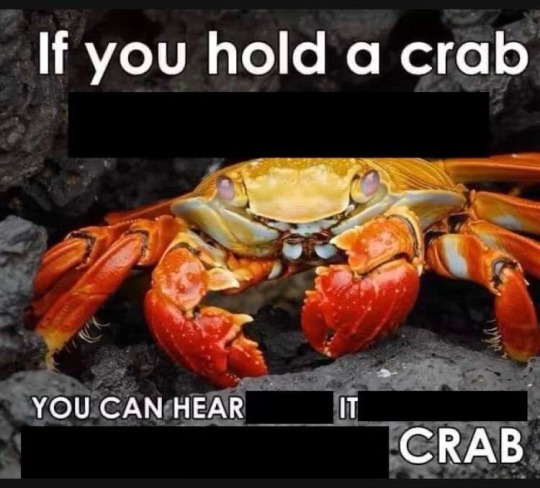
#sally lightfoot crab#crabs#crab#crustaceans#marine biology#aquarium#fish#sharks#oceanposting#deep sea#sea creatures#ocean#science#marine biology memes#fishblr#crab meme#sea life#memes
12K notes
·
View notes
Text

Not only is the whale shark (Rhincodon typus) the world’s largest shark—it’s also the world’s largest fish! Growing up to 40 ft (12 m) long and weighing more than 40,000 lbs (18,144 kg), it’s often regarded as a gentle giant. Don’t be alarmed by its colossal mouth: This slow-moving species is a filter feeder, gulping down small marine animals like shrimp and plankton. It can be spotted in warm waters around the world, traveling thousands of miles each year to find food.
Did you know? Sharks and their relatives have been swimming in Earth’s oceans for about 450 million years. That's long before there were humans, dinosaurs, or even trees!
For more fun facts, check out All About Sharks on OLogy, the Museum’s science website for kids—and everyone else!
Photo: Muhammad syaran, CC BY-SA 4.0, Wikimedia Commons
#science#amnh#museum#nature#natural history#animals#fact of the day#did you know#sharks#whale shark#museum of natural history#natural history museum#marine biology#ocean life#fish#icthyology
1K notes
·
View notes